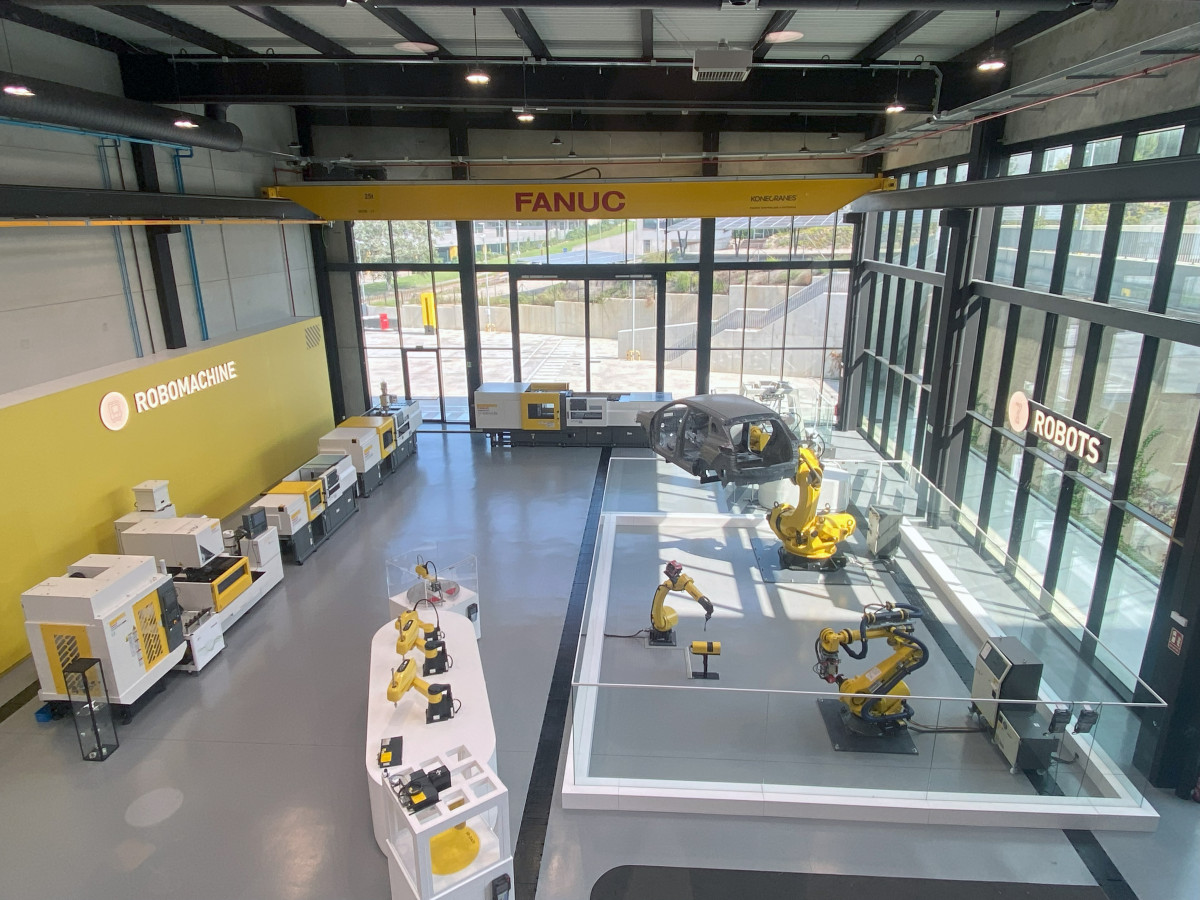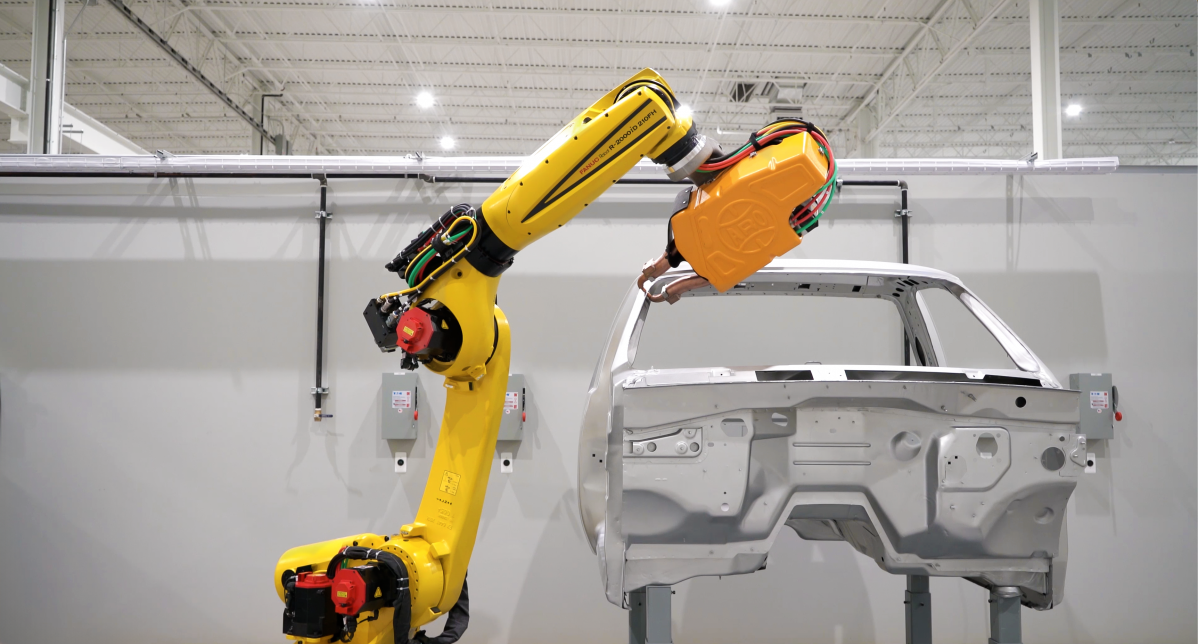Albert Fibla (FANUC): “‘We are working to increase the productive time in the factories”

AutoRevista - How would you describe FANUC's position in the automotive market in the Iberian Peninsula?
Albert Fibla.- I would like to go back in history, recalling that FANUC developed the first numerical control in 1956, its first robots in 1974 and installed its first robot in Europe in 1983. In the case of Iberia, we maintain our continuous commitment to growth in the automotive sector, and proof of this is the inauguration of our new headquarters in Barcelona this year. We have created a building of more than 15,000 square metres, which includes offices, a logistics warehouse, a training centre that joins the existing ones in Elgoibar (Guipúzcoa), Madrid and Oporto, with eight classrooms for the Robotics, Machine Tool and CNC divisions. We also have an Innovation Area of around 1,000 m2 for testing our products and co-development with integrators and end users.

We work with all the vehicle manufacturing plants on the peninsula: SEAT, EBRO /Chery, Volkswagen, Renault, Stellantis, Ford, Iveco. As for Tier 1, we also work with all the benchmarks such as Gestamp, Grupo Antolin, Benteler, CIE Automotive. GKN...
At the current time of uncertainty in the automotive market regarding the speed of adoption of electric vehicles, manufacturers have to prepare today their automation strategy for the future. FANUC helps manufacturers reduce this uncertainty by offering reliable, predictable and easy-to-repair products, increasing factory efficiency, with the goal of zero downtime, minimising non-productive time and reducing manufacturing costs per unit in plants in all regions of the world.
AR.- In which parts of the vehicle does FANUC's value contribution stand out the most?
A.F.- As an example, we can cite components for body-in-white (BIW) chassis using any welding process: spot, arc, laser, friction or sealing and adhesive bonding. Other widespread applications are the assembly of battery packs, the assembly of the vehicle base structure, the mounting of electric battery packs on the vehicle base, the assembly of the electric motor and the entire transmission assembly.
With regard to the electric vehicle, the challenge has been to identify which products, within our portfolio of more than 140 different robot models, are suitable for each specific application, whether to manufacture cells with a fast SCARA robot or with six-axis high load robots for the complete assembly, for which we have the robot with the highest load capacity on the market at 2,300 kg.

The challenge of complete solutions always goes hand in hand with integrators and end users. We are looking for global solutions for a specific project with synergies in Asia, America and Europe.
The user of FANUC robots and machines benefits from FANUC's Service First philosophy: maintenance, spare parts and repair services for all our products with no time limit, even for products sold more than 40 years ago. At FANUC there is no concept of obsolescence, in our opinion it is an additional value and commitment we bring to our customers.
AR - What is FANUC's approach to digitalisation and sustainability?
A.F.- At FANUC there is an IoT development division focused on improving production as well as predictive maintenance to increase uptime in factories. Our MT-Link tool allows us to visualise the status of machines by communicating data to a superior system such as an MES and our ZDT (Zero Down Time) software is aimed at eliminating factory downtime by collecting data and acting before a potential downtime, only when necessary, reducing working hours and spare parts used versus a preventive or reactive maintenance strategy. We are also implementing the use of tools such as the RoboGuide digital twin simulator to analyse and interpret data from a real simulation to help make strategic decisions in terms of line sizing, energy consumption, etc. This year, we have incorporated the possibility of adding virtual and augmented reality to the production line and to our maintenance service through FAR (FANUC Assisted Reality), which simplifies communication between our service department and the technical department of the factories, improving assistance.
In terms of peripherals, FANUC develops its own cameras and stress sensors, both the software and the hardware necessary to be able to perform operations in a closed environment and all from a single supplier, achieving a stable and robust solution. This helps to scale up, consolidate operations and increase confidence.
In terms of sustainability, FANUC is simultaneously working on two perspectives:
Energy savings and carbon neutrality: we are committed to reducing greenhouse gas emissions both in the production of our products and in the use of our products in factories around the world.
FANUC will continue to aim to achieve the SDGs (Sustainable Development Goals) by creating value and working to solve environmental issues such as climate change and other social issues, including the need to improve the working environment. We contribute to achieving 8 of the 17 targets, in particular by improving equipment performance, increasing productivity, reducing maintenance materials and extending preventive maintenance intervals among other things. The durability of FANUC products is one of our strongest points by ensuring the availability of spare parts for the life of the product.

AR.- What is FANUC's situation in areas such as collaborative robotics, mobile and as a service?
A.F.- FANUC has its CRX collaborative models with load capacities from 5 kg to 50 kg with the CR-35. They are flexible automation because they can be quickly deployed in factories. They have a lighter controller with a conventional 200-240 V power supply. Current users can select the type of programming they want: traditional with the PT or icon-based with a tablet, with improved usability for non-expert users. On the other hand, in this field, we have taken the integration of peripherals manufactured by third parties a step further with the possibility of downloading the peripheral application from the FANUC website, which considerably facilitates integration.
As for mobile robotics, it is growing in production and warehousing environments, impacting on multi-tasking flexibility in job shops with diverse workloads. FANUC provides the opportunity for AGV and AMR manufacturers to combine collaborative robots for machine loading and unloading, part transfer, storage, assembly, handling and inspection. Regarding robotics as a service, we work with third party companies. There are cases, but they are not very common in the automotive sector.
AR.- How does FANUC promote synergies between its divisions?
A.F.- Since its origins more than 60 years ago, FANUC has always stood out for being a pioneer in technological innovation, in any of its product lines. The combination of developing those solutions requested by customers and the possibility of testing them on our own manufacturing lines ensures that the product demanded by the customer is launched onto the market, as well as its guaranteed reliability. FANUC factories are the best test bench for our products.
As a global automation supplier, we generate synergies between our CNC, Robots and RoboMachine divisions, which encompass ROBODRILL machining machines, ROBOCUT wire-cutting machines and ROBOSHOT plastic injection moulding machines.
All these products are easily interconnectable and a clear example is the loading and unloading applications of our machines whose integration with FANUC robots is very simple and intuitive.
For all these reasons we consider FANUC to be the global provider of industrial automation solutions. If FANUC manufactures all its products in Japan, which is one of the most labour intensive countries, it is thanks to the automation of its factories where the robots themselves manufacture robots, machines, CNCs, motors and servo amplifiers to reach production centres all over the world being reliable, predictable and easy to repair.
Lea esta entrevista en castellano
Interview published in AutoRevista 2.395

FEMZ y CAAR refuerzan su apuesta por un modelo de trabajo basado en la colaboración público-privada para asegurar el futuro de esta actividad en Aragón.

La periodista Irene Díaz, quien ha formado parte del equipo de redacción de AutoRevista desde enero de 2023, asume la subdirección de la revista. El nombramiento se hizo efectivo el 30 de junio de 2025.

La 21.ª edición de los Volkswagen Group Awards ha premiado el rendimiento excepcional y la colaboración a largo plazo dentro de la red de proveedores. Antes de la ceremonia, Volkswagen AG dio la bienvenida a unos 120 proveedores clave a la Autostadt de Wolfsburg para celebrar una Conferencia sobre Gestión de Proveedores.

Los representantes de la Junta Directiva y Asamblea General de ANFAC han confirmado la adhesión de XPENG como nuevo miembro de la asociación. Con esta nueva incorporación, ya son 62 las marcas que forman parte de la entidad.

La cuarta edición de Motortec Chile, con casi 8.000 visitantes durante sus tres jornadas, del 26 al 28 de junio pasados, se ha afianzado como la feria más relevante de la posventa de automoción del Cono Sur americano..
